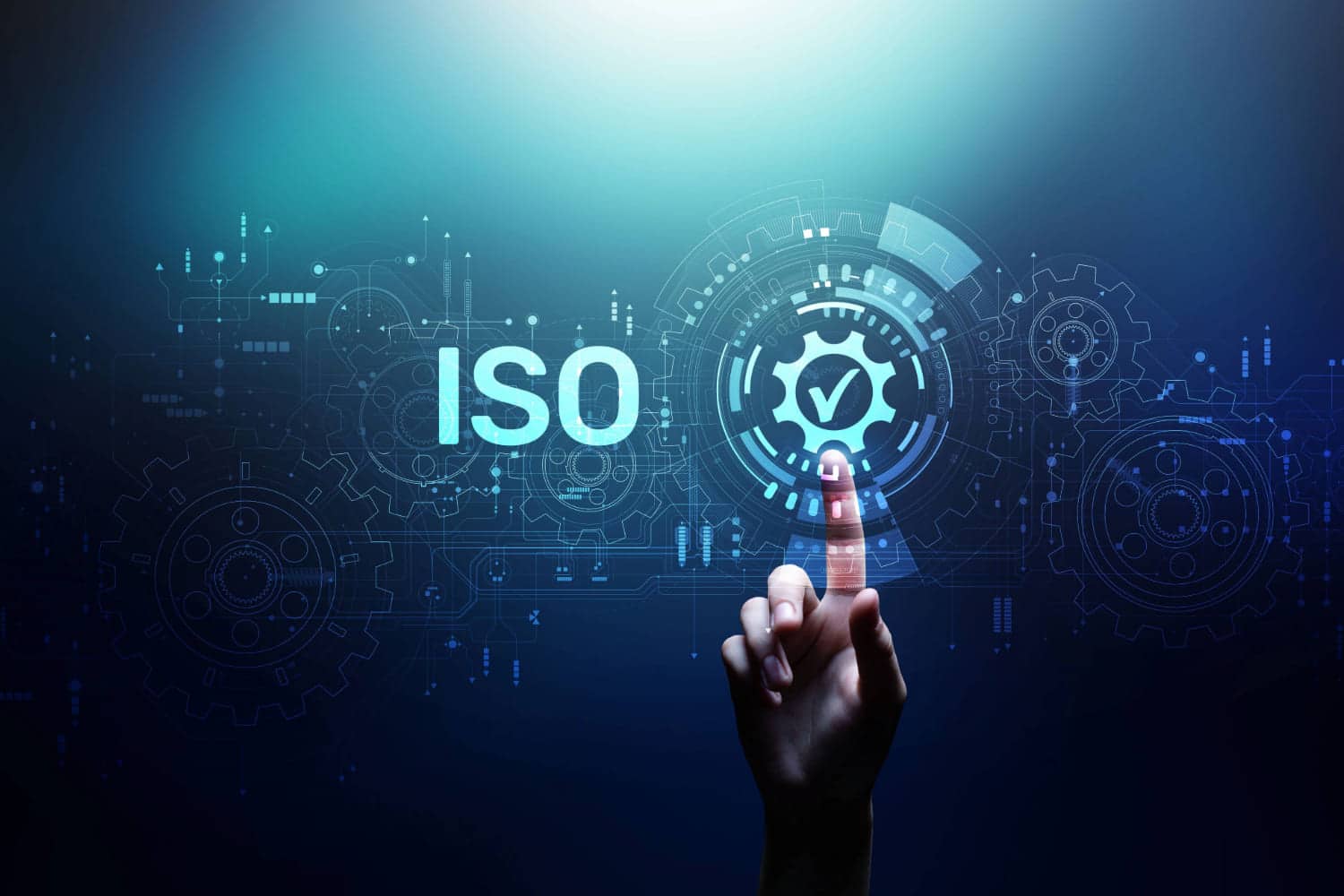For financial institutions, KYC goes beyond mere data collection, encompassing a comprehensive understanding of customers' financial profiles and activities.
ISO 27001: What is the purpose of this security standard

The ISO 27001 standard, developed by the International Organization for Standardization (ISO), provides an internationally recognized framework for the effective management of information security, a fundamental concern for organizations of all types.
What does the ISO 27001 standard involve?
T
he ISO 27001 standard, or International Organization for Standardization (ISO) 27001, is an international standard that defines the requirements for establishing, implementing, maintaining, and continually improving an Information Security Management System (ISMS). This standard provides a systematic and structured approach to information security management in an organization, regardless of its size, industry, or sector.
The main purpose of the standard is to assist organizations in safeguarding the information they possess. Information can range from confidential customer data to internally critical business operation information. The ISMS based on ISO 27001 focuses on protecting the confidentiality, integrity, and availability of information, commonly known as the information security triangle.
To achieve the best results, a series of requirements and processes are established that organizations must follow to implement an effective ISMS. These include:
- Context: The organization must understand its operational environment, identify stakeholders, and determine the boundaries and scope of the ISMS.
- Leadership and commitment: Organizational leaders must commit to information security by establishing clearly defined policies, roles, and responsibilities.
- Planning: Information security objectives must be established, and a plan must be developed to achieve them, considering risks and opportunities related to security.
- Support: Provide necessary resources, including training and awareness, to implement and maintain the ISMS.
- Operation: Documented procedures must be established and maintained to manage security risks, conduct impact assessments, implement security controls, and respond to security incidents.
- Performance evaluation: Continuously monitor and measure the performance of the ISMS, conduct internal audits, and periodically review the system’s effectiveness.
- Continuous improvement: Based on the results of performance evaluation, the organization should seek opportunities for continuous improvement in the ISMS.
To what industries does it apply?
The ISO 27001 standard is applicable to any type of organization, regardless of its size, sector, or location. Some industries that benefit from implementing the ISO 27001 standard include:
- Information Technology
- Finance
- Healthcare
- Government
- Manufacturing
- E-commerce
Benefits of the ISO 27001 standard
Adopting the ISO 27001 standard brings various benefits to organizations. Firstly, it contributes to strengthening information security by providing a comprehensive framework for risk identification and management, safeguarding the integrity and confidentiality of critical information. Additionally, implementing this standard can result in a significant reduction in costs by preventing security incidents, protecting both the financial health and reputation of the organization.
This proactive approach not only positively impacts operational efficiency by systematically managing information security but also reinforces the trust of customers and partners by demonstrating a strong commitment to international standards. Likewise, ISO 27001 certification can confer a competitive advantage, positioning the organization favorably in the global market.
How to obtain this important certification
To be deserving of the ISO 27001 certification, organizations must follow a rigorous process, including the implementation of a comprehensive ISMS and internal and external audits. The ISO 27001 certification audit process is divided into two stages:
STAGE 1: DOCUMENT REVIEW
In this stage, the auditor reviews the organization’s Information Security Management System (ISMS) documentation to verify compliance with ISO 27001 requirements. The reviewed documentation includes:
- Information security policy: Defines the commitment of top management to information security.
- Statement of applicability: Identifies the ISO 27001 controls implemented by the organization.
- Risk management procedure: Identifies, evaluates, and manages information security risks.
- Evidence of control implementation: Finally, the organization must provide evidence of implementing ISO 27001 controls.
STAGE 2: ON-SITE AUDIT
In this stage, the auditor visits the organization to verify that the implementation of the ISMS complies with ISO 27001 requirements. The auditor conducts interviews with staff, observes work practices, and reviews security records.
At the end of the audit procedure, the auditor issues a report that includes non-conformities, i.e., areas where the organization does not meet ISO 27001 requirements, and opportunities for improvement.
From here, measures must be taken to correct non-conformities and implement improvement opportunities. If the organization meets ISO 27001 requirements, the certification body will grant the certification.
A standard born to change company dynamics from the ground up
When delving into common challenges associated with implementing the ISO 27001 standard, it is essential to address the resistance to change that often arises within organizations. Adopting new practices and processes regarding information security can generate reluctance among staff members accustomed to previous methods. Overcoming this resistance involves effective communication strategies that highlight the long-term benefits of the standard and provide a clear understanding of how information security contributes to the overall success of the organization.
Ensuring that the organization has the necessary financial, human, and technological resources to effectively implement and maintain the ISMS is essential. This requires careful planning and efficient resource management to avoid potential obstacles during the implementation process.
Employee awareness also represents a crucial point. Educating employees about the importance of information security, their specific roles in data protection, and best practices will help foster an entire culture of security. This component goes beyond simple technical training, addressing the need for each staff member to understand the shared responsibility in protecting information.
Finally, the effective integration of the ISO 27001 standard into the organizational culture involves incorporating information security principles into all aspects of daily operations. This goes beyond meeting formal requirements and requires a cultural change that promotes security as a fundamental value. Successful integration involves committed leadership, constant communication, and the creation of a proactive mindset towards security rooted in the organization’s structure. Addressing these challenges collectively will contribute to a more effective and sustainable implementation of the ISO 27001 standard in any organizational environment.
Contact our compliance experts now
























